The same caveat applies here as applied to Part 1: This is what has worked for me. Take it or leave it.
Disclaimer: This is a much longer post than the last one. What follows could be the bullet points of an introductory class on elementary literary theory for the contemporary novelist. If you came here looking for the Easy Mode button, pull the EJECT handle now.
Part Two: Theme and Subtext
We’re going to start with theme and subtext, the two primary components of your rhetoric. A story has a theme; a novel (again, my blog; my rules) has a story, plus subtext.
THEME
A story is literal words on the page. Remember from Part I: a story consists of eight parts: theme, setting, character, plot, conflict, point of view, tone, and style.
A story could be, “a man goes to the store to buy bread and has a panic attack when he can’t make a decision.” Setting, character, plot, conflict. Boom. We’re halfway there.
Add a point of view (first-person, third-person / subjective, objective, pick one of each), a tone (humorous, serious, sardonic, go nuts), and a style (wordy, simplistic, the world is your oyster).
Cool. Now, we add a theme, and we have a story. It’s that easy.
Or is it?
The theme is what the story is actually about. This isn’t as simple as it sounds.
The theme can be your story. Absolutely. The theme can be the amalgamation of setting, character, plot, and conflict, and be nothing more. And that’s fine. If your theme is tautological to the constructive elements of your story, I’d argue that, by our working definition, you don’t have a novel. You have a novel-length story.
But suppose the real tale you’re telling, here, is not about a guy buying bread. Suppose you’re writing about “abundance and its realization.” That’s your theme. Maybe the trip to the store is a vehicle for the theme. Ooh. Aah. Artsy. Deep.
When you’re writing a novel, you need to decide what your theme is so you can apply literary devices to create daylight between theme and the other fundamental story elements: character, setting, plot, and conflict.
The headspace between your theme and your story gives your subtext room to raise hell—you’ll need that in just a minute—and you create it by employing the same literary devices so many failing authors swear they don’t need to learn. We’ll get to those devices and how they work some other time (heck, just click on the link up there and you can look them up), but the crux of it is, you can’t employ them to build subtext until you know your theme and how the theme relates to—and, in a novel, often varies from—the story.
I’m not going to bullshit you on this: starting cold, it can take you years to learn what all the literary devices do, recognize them in books you love, and then figure out how to use them in your own writing. But, the sooner you start, the sooner you’ll get there, so get to work.
You have to apply literary devices to your story and your theme to develop subtext.
SUBTEXT
The subtext is the story you’re telling without any words at all.
The subtext to our story about the guy buying bread and having a panic attack might be “The abundance we experience daily in the Western World proves that this is actually Heaven, and therefore we’re already dead; it’s just that we’re dead inside and our bodies are still going through the motions.” (I’m feeling very French Lit today. Cope.)
You don’t ever say the subtext out loud; you let the audience figure it out for themselves. Some will, some won’t. Not your problem. (The fact that some people won’t ever see your subtext is why you have to make your story taut and exciting, and why your mechanics and usage have to be on point. At a minimum, your novel has to be enjoyable to read.)
The subtext is what the literal text doesn’t say, but what the reader takes away from the book regardless. Subtext is the “What this novel meant to me” that readers gush about.
You differentiate a novel from a novel-length book by deliberately building subtext.
This is critical because relatable subtext sells books better than anything else on the planet. When you write a novel that means something to a reader, that reader will recommend it to their friends. That’s free advertising and it goes on forever.
Subtext is also why novels are generally long. To take your story about a guy having a panic attack buying bread and make it about the realization that we’re already dead, without actually having a Twilight Zone light-bulb moment with the protagonist shouting, “A-HA! I’m already dead!” is going to take two or three hundred pages unless you’re really, really good.
This is where you start detailing the cracks in the sidewalk, his reflection in the window, a dog that barks oddly, the dialogue of the paramedics, his drug-induced dreams in the hospital, whatever. You don’t just throw this all in there for window-dressing, either; it’s there because it conveys subtext.
The employment of details as subtext cues is another huge difference between a novel and a story.
In a story, all this just happens and it’s interesting and cool, and hey, that’s great. No, really, it is. Here’s your story, here’s your theme, here’s some details to chew on. Drive carefully. Have fun.
Quite a bit of the details in a novel are there specifically for subtext; i.e., to say something without saying it out loud.
Fantasy authors, hold my beer. Ready?
In a fantasy novel, these subtext cues reside in your worldbuilding details.
This is why, in fantasy, you need to overbuild past what your characters see or experience: the functional details keep the world turning and drive the story, yes; however, they also serve as a trail of breadcrumbs to your theme and subtext. That’s why worldbuilding is so important in SF and fantasy. It’s not because it’s cool. I mean, it is cool. It’s really, really cool. But in a well-written SF or fantasy novel, worldbuilding is a key component of theme and subtext, which makes it one of the pillars of your rhetoric. It also means that you need more worldbuilding details in your pocket than the story requires. You have to know how the world does its thing, because the gears ticking away behind the veil make up the contingencies that your theme and subtext play against.
If you’re writing SF/F and no one has told you this before, I’ll give you a moment to let that sink in.
Subtext is tricky. Dialing in subtext is one of those things you don’t so much learn to do as learn to recognize in other authors and then steal once you start seeing how it’s done. (Being able to steal other writers’ techniques is probably the best reason to learn literary devices. Seriously, once you can recognize them on sight, it’s how I imagine being a musician with absolute pitch. It will cut years, perhaps even decades, off your learning curve.)
Subtext is a lot like voice in this respect; it’s invisible when it’s done properly, so it takes a lot of study to learn to recognize it. And, like voice, building subtext is like growing a Japanese garden, arranging everything one stick and leaf at a time, day after day, until it’s exactly what you envisioned but it looks like it grew that way.
All this said, you need to know your subtext while you’re laying out your story and theme. Which is to say, before you start writing.
The reason is that the climax of a novel is when the subtext, the story, and the theme all reach critical mass at the same time. A climax that doesn’t carry the theme and include the subtext is a rising action ending in a critical plot point. Which is great, but it’s not a climax. That difference between a climax and a critical plot point is another reason that a novel with a deliberate and well-crafted subtext becomes one of those books that people keep within sight on their shelves and recommend to everyone they know.
The beautiful part is, the reader probably doesn’t even realize any of this. They don’t know how you did it. They don’t care. They just know your book hit them really hard at that one point in the story, and they will buy whatever you do next because if you can do it once, you can do it again. Effective climaxes are how you get read-throughs for your series. They’re how you get word-of-mouth recommendations. They’re how you create lifetime fans.
In my novel Dragon’s Trail, the climax is not the last big battle sequence. The climax is the fight in the storeroom, nearly a hundred pages earlier. That’s where the story (a Hollywood weapons master takes a shot at redemption in a fantasy world), the theme (the greatest swordsman in the world digs himself deeper every time he wins a fight), and the primary subtext (the increasing obsolescence of the warrior caste in modern society has led us to woefully underestimate the value of calculated violence) all reach critical mass and feed off each other.
Everything that follows–the mission to rescue Adielle, the escape, the final battle–is a lengthy consequential rising action, which is something you see in technothrillers after the answer becomes clear (the climax) and the heroes now have to risk everything to actualize it. The storeroom scene in Dragon’s Trail is the “finding the antidote” sequence in any technothriller. (I wrote Dragon’s Trail using the plot, point of view, tone, and style of a modern technothriller, with the characters, conflict, theme, and setting of a fantasy novel.)
I’ve had fans tell me they had to quit reading during the storeroom sequence because it’s so intense. I’ve had readers tell me they cried. Not because it’s graphic (and it is), not because it’s violent (and holy shit, it is), but because it becomes clear over those six pages just who Jarrod is and what he’s capable of, and you don’t know where or how far it’s about to go because neither does he. That’s what happens to your reader when your story, theme, and subtext climax together. Make ’em cry, make ’em buy.
Congratulations. You now know more about how to write a bestseller than 99% of people trying to do this.
PRO TIP: KEEP YOUR PANTS ON
The foregoing is why, in my opinion, pantsing a novel is a terrible idea and yes, I just said that.
And seriously, if you’re dead-set on pantsing, just give me ten minutes to show you how you can still get all the fun of discovery with a fraction of the grief.

PANTSING
Pantsing a novel—writing “by the seat of your pants,” i.e., without a plot outline, just a blank piece of paper aaaaand, go!—will give you a story. I’m not debating that. It’s a fast and rewarding way to write because it gets you straight into the action, typing away madly, drinking coffee, finding neat words, doing all that author shit. Pantsing is how you win NaNoWriMo.
At some point, though, when your story is complete, if you want it to truly be a novel (again: my blog, my definition), you will need to reread the manuscript from Page One and figure out what the hell you’re actually trying to say. That’s your theme, remember. In a novel, theme can vary from the other fundamental story components of setting, character, plot, and conflict.
As you get better at writing novels, your theme will emerge as you develop the story, and you can pants to a greater and greater degree. Once you recognize your theme, though, you’ll need to stop pantsing, reread, rewrite, edit, restructure, move scenes, add and delete characters, whatever, for everything that came before, until the theme and the other story components figure themselves out. This will be a screeching halt in your creative momentum. Some writers can overcome it. Some can’t.
On the other hand, if you wait until the story is finished to determine a theme, you’ll have a lot more to do to get the theme and story to play nice. You’re most likely talking a near-total rewrite.
If you pantsed your story, then once you have your story and your theme, you need to go back and develop your subtext. This means—you guessed it—flipping back to Page One and rereading to now see what plot, character, conflict, and thematic points you can leverage against each other to create your unspoken story. You’ll also need to take out window-dressing that doesn’t mean anything and replace at least some of it with things that do. This means another massive edit, this time working in your metaphors, irony, symbolism, allegory, chemistry, secondary and tertiary characters, subplots, and so on, to shoehorn that second story in on top of the first.
It is a massive pain in the ass and a huge waste of time to do a rewrite for subtext.
If you’re a pantser because you just want to write books–no subtext, no thematic headspace, just an entertaining story about a thing that happened–hey, go nuts. Thanks for dropping by.
If you pantsed your book with the intention of creating a novel and you didn’t concept your theme and subtext first–and you couldn’t, because you didn’t even know what your story was when you started–you will likely wind up writing your manuscript three times just to get a shitty first draft that you’re going to rewrite a few more times, anyway, because first drafts are terrible. (They are. Yours, mine, everyone’s. That’s just how this works. That’s also a conversation for the future.)
There’s another thing, here, too, about pantsing that will fuck your world straight up and shit on everything you love as an author: point of view.

POINT OF VIEW
The point of view you choose for your novel will limit–and enable–the information your reader receives.
You chose point of view back when you were developing the story. It’s one of the eight components of story, after all.
Remember? Theme, setting, character, plot, conflict, point of view, tone, and style.
This is important because when you’re building your theme and your subtext, you need to figure out how you’re going to relate them to the reader. Is it best done in first-person? And if so, which first-person? Should it be told in memoir, as a distant memory colored by time and written in an older voice than originally experienced it? Should it be subjective narration, close up and personal? The narrator’s interior monologue relayed to the reader, and if so, objective or subjective? Interior monologue with stream of consciousness, told to the narrator with the reader as an observer?
If you need third person to carry your theme and subtext, do you need every character’s input? If so, is there something in the subtext that requires you limit the characters’ input to one character per scene (third limited)? Do you need a narrator to tell the audience what’s happening to multiple characters and possibly do some exposition (third omniscient objective)? Does the narrator need to be a character in their own right (third omniscient subjective)?
And so on.
Choice of POV and narrative framing is going to affect what the reader learns as the novel progresses. This will affect your subtext, and, to some degree, even your theme, as they’re also things the reader learns as the novel progresses.
There are six first-person POVs I can think of off the top of my head, and also six third-person POVs, plus several types of frame narrative, and combinations of all of the above, which I in no way recommend doing unless you’ve really got a handle on voice.
You can change POV if you’re good. Oh, you bet you can. I’m not talking about head-hopping; The Art of Racing in the Rain moves deftly between first person subjective narration and memoir. It’s practically a textbook on first-person voice shifts. Some really shit-hot big-name authors will move between limited third objective and what indies call “Deep POV”–limited third subjective–tightening the lens throughout a scene as the tension rises; I’ve done something similar with omniscient third in Stonelands, gradually stripping away characterization from the narrator by moving from omniscient third subjective to omniscient third objective as the stakes go up. It’s a neat trick that only took me four drafts and nearly half a million words to dial in. N.K. Jemisin’s The Fifth Season is an award-winning frame narrative that moves between second-person and omniscient third objective.
There are options, is what I’m saying. You can’t just say “first,” or “third,” and go.
If you write a novel without knowing your story, theme, and subtext up front, you can’t possibly know which POV will tell it effectively. Assuming there are 20 POVs and combinations thereof–and there are likely many more–you would have a 1 in 20 chance of picking the right one. Would you play Russian Roulette with a revolver holding 19 rounds in a huge 20-round chamber? Because that’s what you’re doing, and you’re holding the muzzle up to your novel’s face when you pull the trigger.
I firmly believe that the majority of manuscripts that die on the vine do so because the author chose the wrong POV and narrative framing. They hit a point where they can’t say what they need to say, though they may never realize why. Usually when this happens, the author didn’t dial in their story, theme, and subtext first, so they just picked a POV they liked and started typing, figuring they’d work it out as they went along. It doesn’t work that way.

I know one household-name, award-winning author who pantses everything. She gets her theme, subtext, story, and POV to line up every time, hits the climax with surgical precision, and does it all in her head. It can be done. I can’t do it. I used to work with a guy who could do base-ten logarithms in his head, too. I can’t do that, either. Freaks are out there, is what I’m saying.
I propose the following alternative to pantsing a novel: spend a few days/weeks/years figuring out your story, theme, and subtext. When you have them, put them in a notebook. Now, choose a POV and do a couple of test runs on some scenes for the hell of it. Pick another POV and try that. It doesn’t have to be much, here. A page. Two, tops. Figure out what works, and you will save yourself a world of ass-pain once you type THE END for the first time.
You don’t have to do a full outline, or write a ten-page synopsis, or really do any kind of actual work. You can just determine those three structural elements, and your POV, and then pants your novel. Knowing your story, theme, subtext, and POV will keep you on the rails and you can still revel in the joy of discovery and the godlike thrill of creation and all that fun stuff.
We’ll get to structure and process another time. Everybody has their thing.
And that’s important. It’s your call how you want to do this. Some people like doing all that work: pantsing, rewriting, re-re-writing. Throwing it out halfway and starting something else. And that’s fine, too. Find what works for you. Maybe being pissed off and cranky and frustrated is your process. Me, I like it when things work, so I map it all out in advance and I make sure it’s going to work before I put the time in. Yes, plotting is less fun than pantsing, which brings us to Malik’s Rule #6:
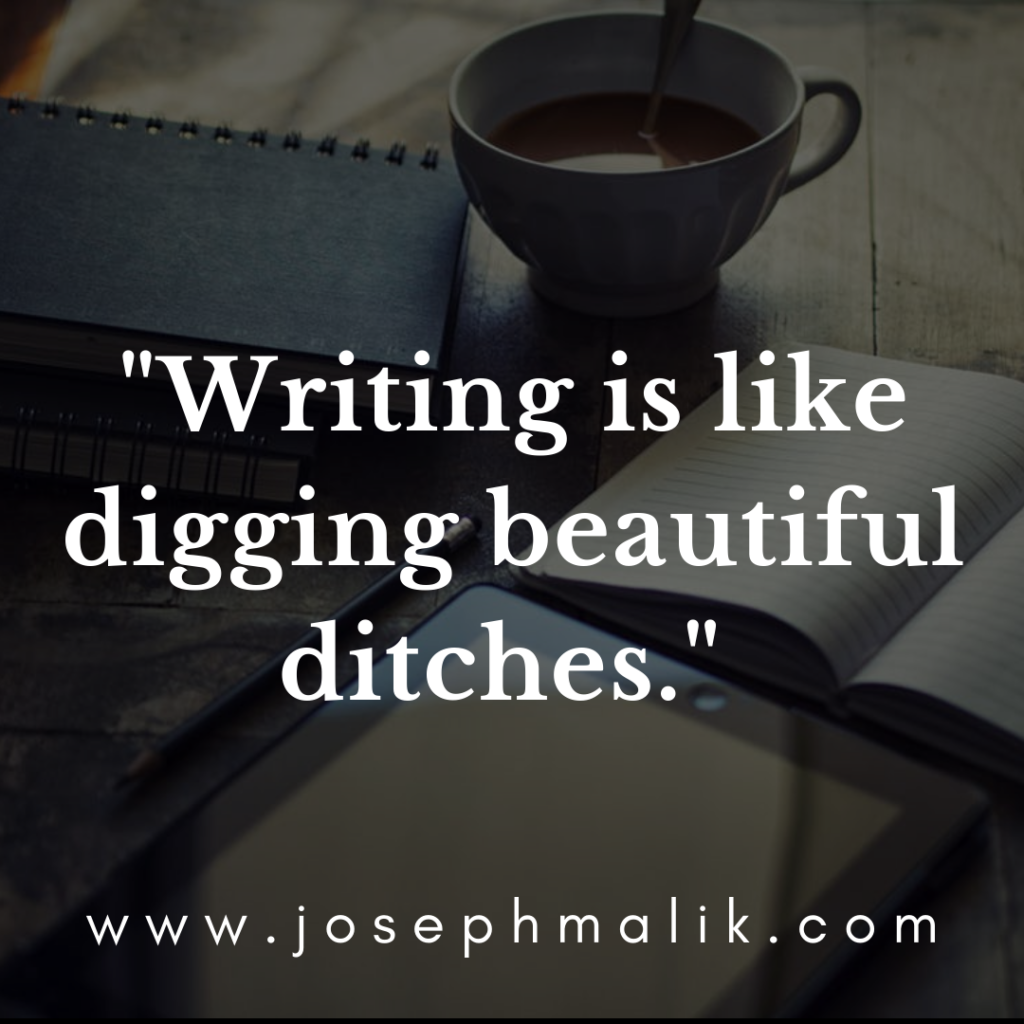
Writing a novel has all the fun of digging ditches for a solid year or two, except when you’re done, people on the internet tell you how great your ditches look.
So. To recap:
A story has a theme. A novel has story, theme, and subtext.
Subtext sells.
Your life will always be easier if you know what you’re doing before you do it.
Thanks for your time. Be cool to people.


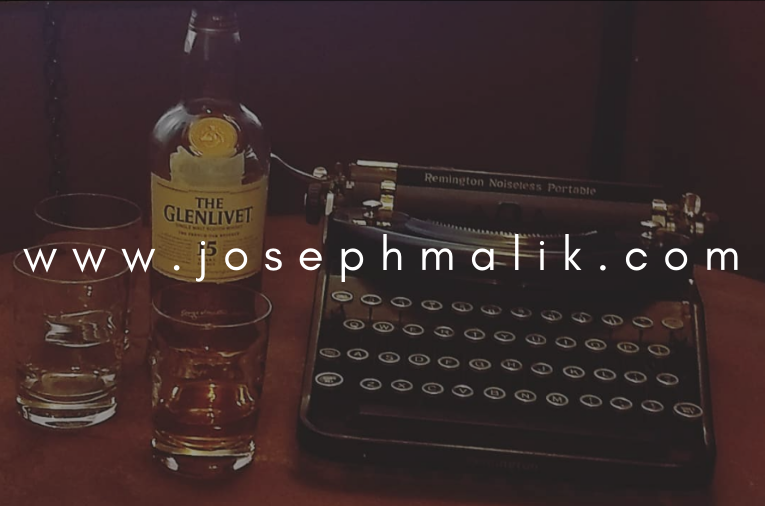
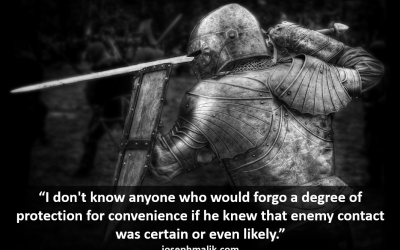
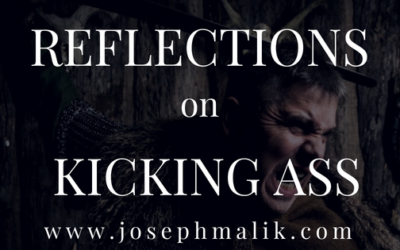
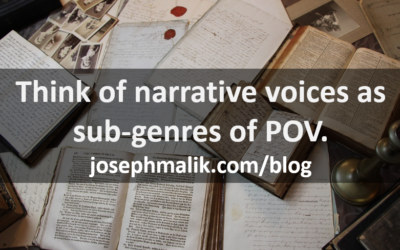
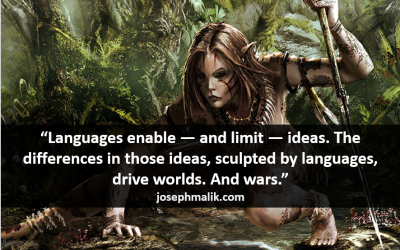
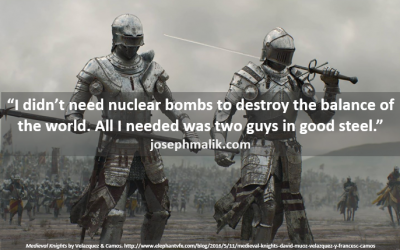
Thanks for this Joseph. I feel that I instinctively captured much of what you are saying in my first novel, which I am still editing and reviewing, but this will definitely help focus and refine my efforts and make the overall project better.
This is just great – thanks, Joseph! A few questions, if I may?
1) In your estimation, what’s the likelihood that a reader will experience the subtext in the way you intended? I know reading is subjective (proof: Goodreads…), I just wonder if readers ever actually *get* your book without you telling them what the subtext is?
2) Should the themes/subtext be consistent across a series? Or should it be book-by-book?
Thanks again for this guide. This is a page I’ll be coming back to time and again.
Hi Jaysan, great questions.
1.) Slim, but it’s not your problem. When a reader really gets what you intended to say, it’s a huge bonus.
This is one of the reasons for layering subtext and theme; if you make it fun to read and/or an enjoyable story, you’ll still have happy readers who aren’t necessarily looking for deep meaning. However, my experience has been that the readers who like to take everything apart and look for meaning become rabid fans when they find it. Also, having layers of meaning in the novel makes it one that people will want to read multiple times, which also makes hardcore fans, I’ve found.
2.) Subtext and theme can be consistent for each book in a series, but they certainly don’t need to be. You can also have individual subtexts in each book in a series but write the series to have a separate subtext and theme of its own.
A good article, I don’t agree with all of it but anyone who enjoys a dram of Glenlivet shows remarkable taste and is usually worth listening to at least once (If you can find it, get yourself a bottle of Glenlivet Carribbean Reserve. Your whisky soul will love you forever for it).
I’ll have to come back and read the blog a couple more times to get my head round all of it but a word on subtext – “dialing it in?” Do you really need to be that robust with it? My take would be that if your character’s are strong enough written and you keep them in line with your theme, the sub-text will sort itself out.
People will read into it what they want. Do you need to lead them directly to it? Here’s a f’rinstance. Two of my favourite novels – “The Forever War” and “Starship Troopers”. Both have a lot to say about war and they say it very well.
Despite opinions I’ve read about Heinlein being right up there with the guys who drown kittens in a sack and the book being right wing guff, I still think it is more nuanced than Haldeman’s book in what it says about what making war on others might do to us. That’s my subtext. Maybe I’m wrong about what Heinlein wanted to get across but if I am, I don’t give a shit.
Anyway, thanks for the very fine website. I enjoyed the blog about steel. Took me right back to metallurgy class in college. Reminded me of what a complex material iron is. Time to look out the old iron and steel phase diagram again and do a refresher.